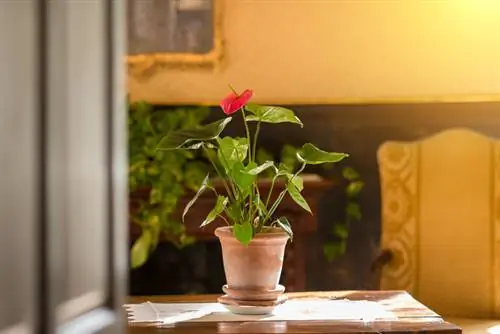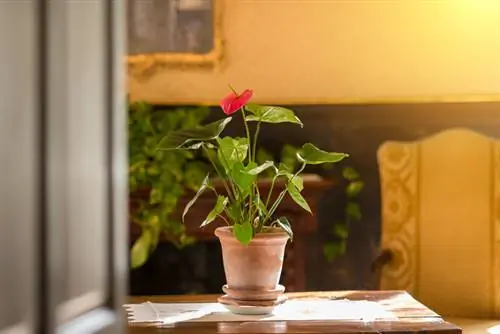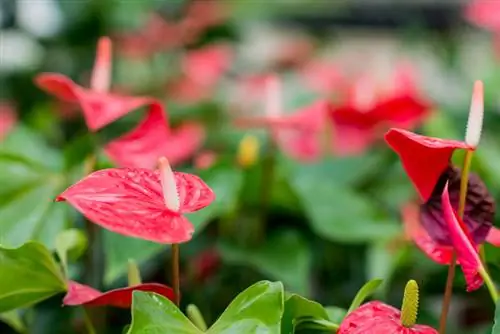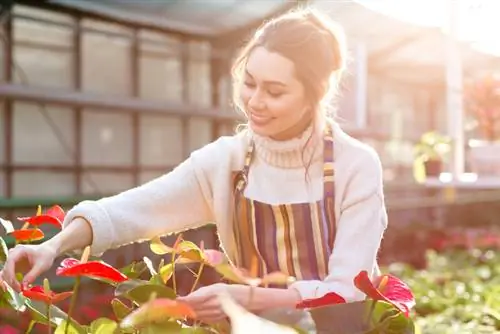- Author admin [email protected].
- Public 2023-12-16 16:46.
- Last modified 2025-01-23 11:20.
The flamingo flower, grown in many variations, is one of the most popular houseplants and can be found in many apartments. Their white or red sheath leaves with the eye-catching flower spadix make this plant particularly attractive. However, it is unfavorable if the plant attracts the attention of children or cats, as it is one of the poisonous plants.

Is the anthurium poisonous to people and pets?
The flamingo flower (anthurium) is poisonous, especially in its leaves and colorful sheath leaves. It contains the pungent substance aroin and oxalate raphide, which can cause skin irritation, swelling and, after consumption, nausea, vomiting and diarrhea.
Which parts of plants are poisonous?
The toxins are found throughout the plant, but mainly in the leaves. The poison is also contained in the colorful leaves, which many mistakenly believe to be part of the flower.
Toxins and their effects
The arum plant contains the pungent substance aroin and crystal-like needles (oxalate raphides). These shoot out when the anthurium is touched and cause tiny skin injuries that resemble chemical burns. Signs of pure poisoning can be.
- Severely reddened skin.
- Swelling in these areas.
- Bubbling.
After eating parts of the flamingo flower, the tongue and the oral mucous membranes swell, which leads to difficulty swallowing and, in some cases, speech disorders. Nausea, nausea and diarrhea also occur.
First aid measures
Plenty of fluid intake is advisable. If no symptoms occur within the first half hour, no further medical treatment is necessary. Otherwise, see a doctor as quickly as possible, as sensitive people may experience bleeding in the stomach and intestinal tract.
Tip
If children or pets show signs such as diarrhea, vomiting, difficulty swallowing, increased saliva production or skin rashes, poisoning should always be suspected. To be on the safe side, also check your green plants; you can usually see whether the leaves have been nibbled on or whether some are missing. Give plants like the flamingo flower a location where they cannot be reached by two-legged and four-legged friends.






